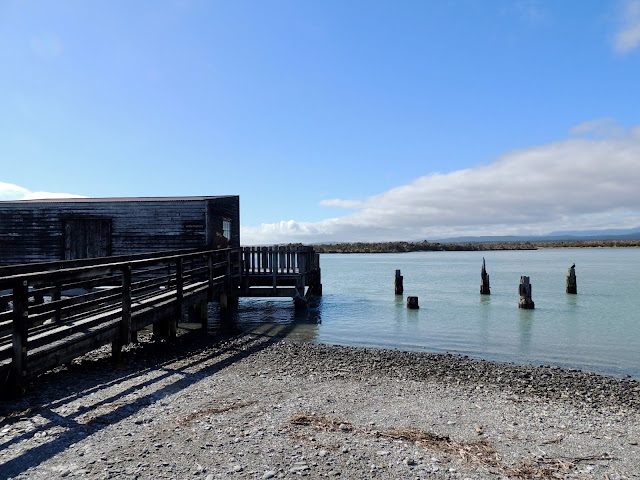We walked to the Okarito Lagoon yesterday, just a few steps from our campground.
Stunning and diverse scenery dominates the small coastal settlement of Ōkārito - windswept coastline, tidal estuary, lagoon, sea cliffs, lush rainforest and unsurpassed views of the Southern Alps/Kā Tiritiri o te Moana. Thousands of native birds (more than 76 different species) visit the Ōkārito Lagoon and many make their home in the vicinity, including the famous kōtuku/white heron and royal spoonbills.
The lagoon is 8000 acres large.
One of the fabulous residents.
Historic wharf building.
Okarito was the main supply center for gold miners sifting the black sands to the north and south.
The town of Okarito began life in the gold rush years of the mid 1860’s and supported a local population of up to 4000 interesting characters; heritage sites and buildings from the period still remain, and the historic Wharf building and Donovan’s Store contain fascinating displays about Okarito’s history.
The area is a bit quieter now; Okarito’s population varies through the seasons but in winter we probably have around only 20 or so hardy souls living here; it’s a beautiful time of year with the beach deserted, often clear but cool weather, and snow covering the mountains in the distance to low levels. It’s extremely rare to get snow here in Okarito in winter – a few frosts every now and then, but the ocean on our doorstep keeps the temperature from dropping too low.
Gold!
At least now I know what I'm fossicking for: gold nuggets in black sand.
Historic hostel
We're off on a walk, not entirely certain where it will lead.
After two hours we reached--whew--the top of the Trig Walk, with unmatched views north of the coastline and Okarito lagoon.
Using a long lens, I bring our campsite into view. That's the airfield is between the Rover and the beach.
That was a monster of a vertical walk. Steak time.
And vegetables. Keep walking, campers.
























No comments:
Post a Comment